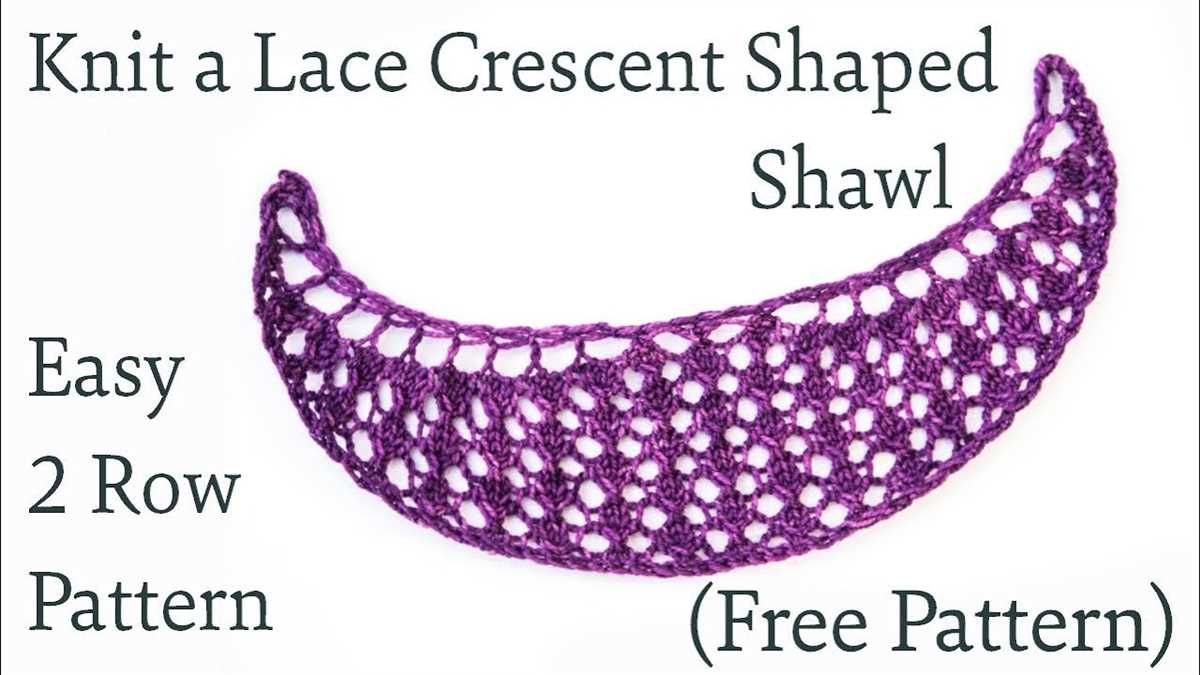
Knitting lace patterns can seem intimidating, especially for beginners. The delicate and intricate designs may appear complex, requiring advanced knitting skills. However, there are many lace patterns that are surprisingly easy to master while still producing stunning results.
In this article, we will explore an easy knitting lace pattern that is perfect for beginners or those new to lace knitting. This pattern is ideal for creating lightweight and airy garments, accessories, or home decor items.
With just a few basic knitting techniques, you can create beautiful lacework that looks more complicated than it actually is. Whether you want to knit a lace shawl, a lacy scarf, or add delicate details to a sweater, this easy knitting lace pattern is versatile and can be used in a variety of projects.
What is a knitting lace pattern?
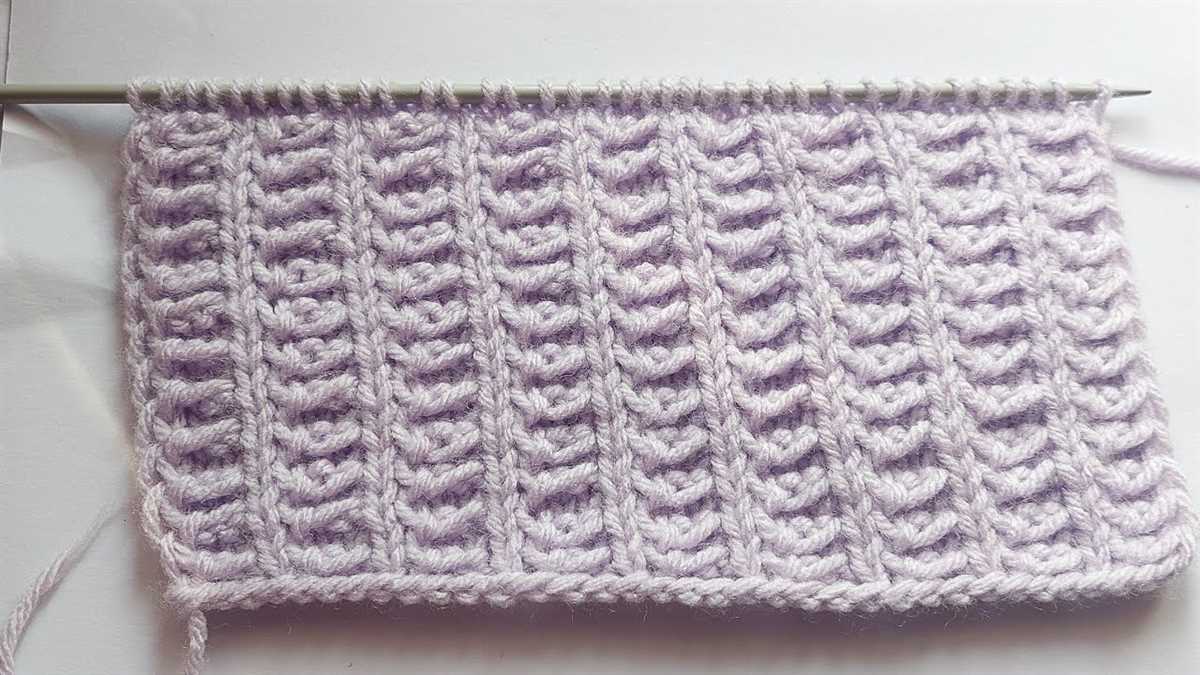
Knitting lace patterns are intricate and delicate designs that are created using a combination of different knitting stitches. They are often used to add beauty and elegance to various knitted projects, such as shawls, scarves, and even socks. Lace patterns can range from simple to complex, and they can be created using various techniques, including yarnovers, decreases, and increases.
One characteristic of knitting lace patterns is the presence of openwork, which is created by intentionally creating holes in the fabric. These holes give the lace pattern its airy and delicate appearance. Lace patterns can be made using different yarn weights and fibers, allowing knitters to create a variety of looks and textures.
Key elements of a knitting lace pattern:
- Yarnovers: Yarnovers are an essential stitch used in lace patterns. They involve wrapping the yarn around the needle to create an extra stitch and adding an open hole to the fabric.
- Decreases: Decreases are stitches used to reduce the number of stitches in a row. They help shape the lace pattern and create the desired design.
- Increases: Increases are stitches used to add stitches to a row. They are often used in combination with decreases to maintain the stitch count and create the desired lace pattern.
- Charts or written instructions: Lace patterns can be presented in the form of charts or written instructions. Charts visually represent the stitches and rows, while written instructions provide step-by-step guidance on how to create the lace pattern.
Knitting lace patterns require some experience and patience, as they often involve intricate stitch maneuvers and concentration. However, once mastered, they can result in stunning and eye-catching knitted pieces that are sure to impress.
Benefits of using a knitting lace pattern
Knitting with lace patterns can add an elegant touch to your projects, and using a knitting lace pattern can bring numerous benefits to your knitting experience. Whether you are a beginner or an experienced knitter, here are some advantages of using a lace pattern:
- Enhances creativity: Knitting with lace patterns allows you to explore your creativity and create unique and intricate designs. You can experiment with different stitch combinations, motifs, and edging to make your knitting truly stand out.
- Improves your knitting skills: Lace patterns often involve more advanced stitches and techniques, such as yarn overs, decreases, and intricate stitch patterns. By working on lace projects, you can improve your knitting skills and become more proficient in executing complex stitch combinations.
- Adds versatility to your projects: Lace patterns can be used in a wide range of projects, including shawls, scarves, sweaters, and even home decor items. You can customize the size and shape of your project to suit your needs, and the lace pattern will add a touch of elegance and sophistication.
- Provides a sense of accomplishment: Completing a lace project can be incredibly rewarding. The intricate and delicate nature of lace knitting requires patience and attention to detail. When you finish a lace project, you can admire the intricate lace design and feel a sense of accomplishment for mastering such a beautiful technique.
- Offers a wide variety of patterns: There are countless knitting lace patterns available, ranging from simple lace motifs to complex lace designs. This variety allows you to choose patterns that match your skill level and preferences, ensuring that you never run out of options for your next project.
In conclusion, using a knitting lace pattern offers numerous benefits, including enhancing creativity, improving knitting skills, adding versatility to projects, providing a sense of accomplishment, and offering a wide variety of patterns to choose from. Whether you are a beginner or an experienced knitter, lace patterns can take your knitting to the next level and create beautiful and intricate designs.
Choosing the Right Yarn for Your Lace Pattern
When it comes to knitting a lace pattern, choosing the right yarn is essential. The type, weight, and fiber content of the yarn can greatly affect the look and drape of your finished project. Here are some important factors to consider when selecting yarn for your lace knitting:
Type of Yarn
There are various types of yarn that can be used for lace knitting. Some popular choices include lace weight, fingering weight, and sport weight yarns. Lace weight yarn is the thinnest and is perfect for delicate and intricate lace patterns. Fingering weight yarn is slightly thicker and provides a good balance between lace definition and durability. Sport weight yarn is a bit heavier, offering more warmth and substance to your lace project.
Yarn Fiber Content
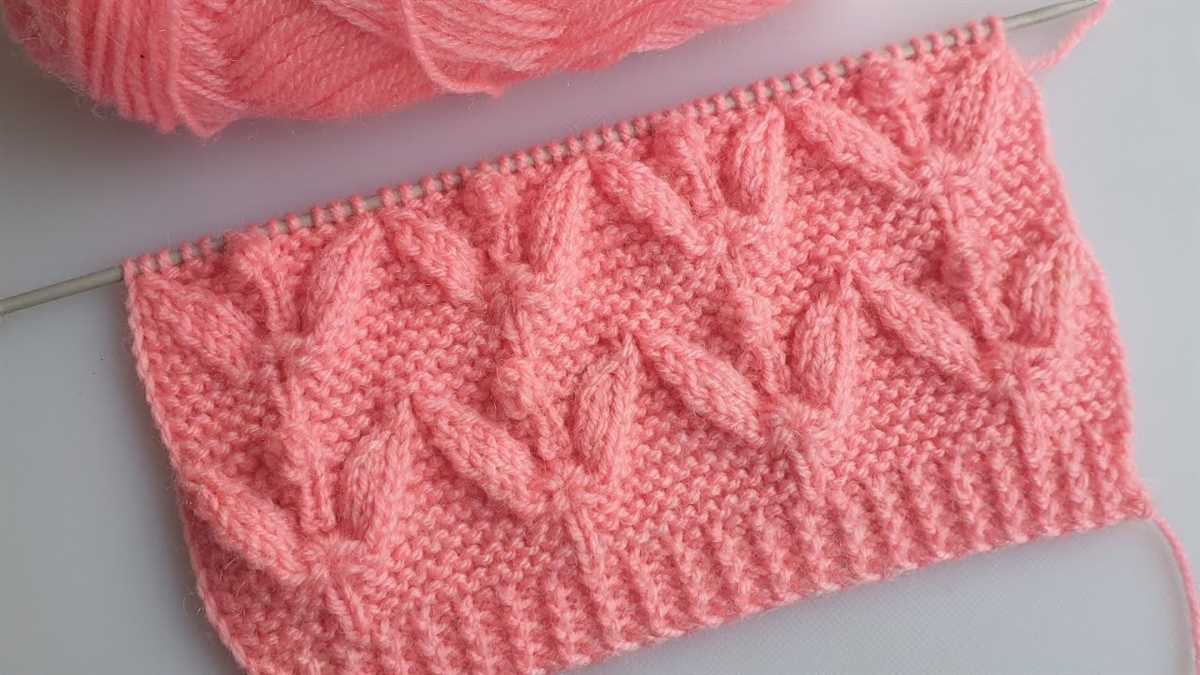
Another important consideration is the fiber content of the yarn. Different fibers have different characteristics and can affect the drape and stitch definition of the lace pattern. For example, wool and alpaca yarns are great choices for creating warm and cozy lace garments, while silk and bamboo yarns can give a soft and flowy feel to your lace work. It’s important to think about the level of warmth, breathability, and drape you desire for your finished project.
Gauge and Yardage
Before starting your lace pattern, it’s crucial to swatch and determine your gauge. Lace patterns often require a precise gauge to achieve the desired result. Additionally, consider the yardage of the yarn. Lace patterns typically require more yardage than other types of knitting, as the stitches are often open and airy. Make sure you have enough yarn to complete your project without running out.
Color and Texture
Lastly, consider the color and texture of the yarn. Lace patterns often highlight the intricate details of the stitches, so choosing a solid or subtle variegated color can enhance the beauty of the lacework. Additionally, yarns with a smooth texture can make it easier to see the stitches and create crisp and well-defined lace patterns.
- Choose the right type of yarn for your lace pattern, such as lace weight, fingering weight, or sport weight yarn.
- Consider the fiber content of the yarn for the desired drape and stitch definition.
- Determine your gauge and ensure you have enough yardage to complete your project.
- Select a color and texture that will showcase the intricate details of your lace pattern.
Essential Knitting Techniques for Lace Patterns
When it comes to knitting lace patterns, there are several essential techniques that every knitter should know. These techniques allow you to create delicate and intricate designs that are perfect for lace knitting projects.
1. Yarnovers
Yarnovers are an essential stitch technique for lace patterns. They create the decorative holes and openwork that give lace its airy and delicate appearance. To make a yarnover, simply bring the yarn to the front of your work (if it’s not already there), then wrap the yarn around the needle as if you were knitting, and continue with the next stitch. Yarnovers are often paired with decreases to create the intricate lace motifs.
2. Lace Decreases
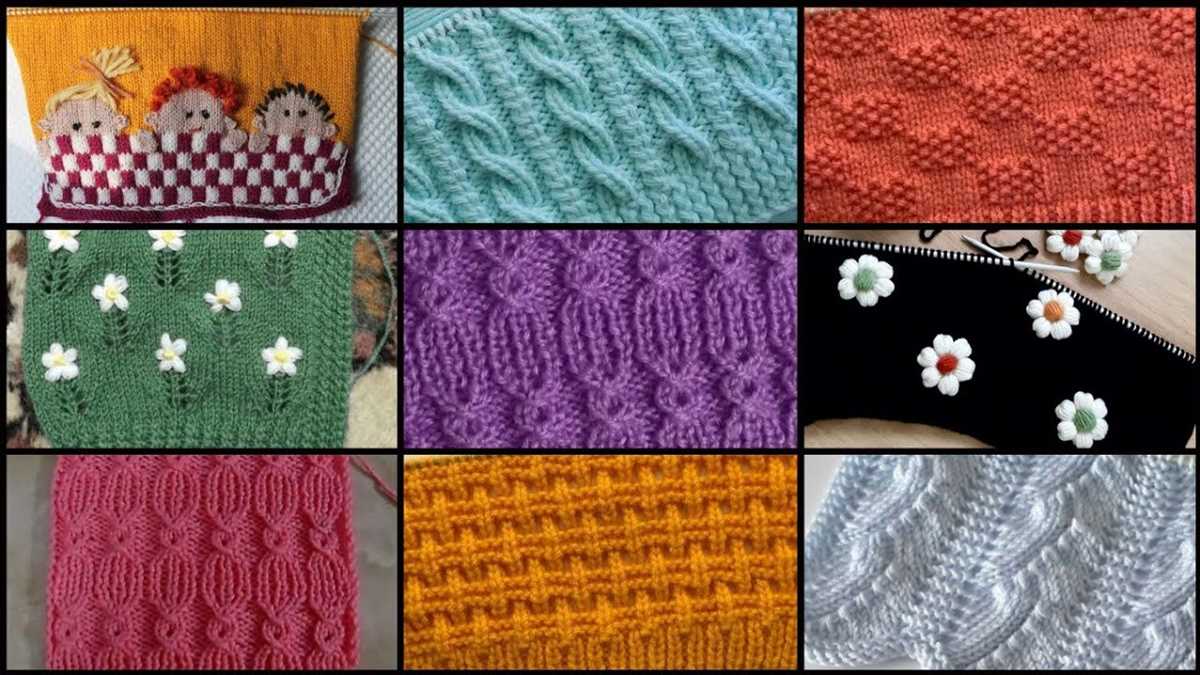
Lace patterns often include decreases to shape the fabric and create the intricate lace motifs. There are several types of lace decreases, including the knit two together (k2tog), which stitches two stitches together into one, and the slip, slip, knit (ssk), which creates a left-leaning decrease. These decreases help to shape the lace pattern and create the graceful lines and curves that are characteristic of lace knitting.
3. Blocking
Blocking is an essential step in knitting lace patterns. It involves gently stretching and shaping the finished piece to open up the lace stitches and allow the pattern to shine. To block a lace project, wet it with water, gently squeeze out the excess, then pin it to a blocking mat or other flat surface, stretching it to the desired shape. Allow it to dry completely before removing the pins. Blocking helps to highlight the lace motifs and gives the finished piece a polished and professional look.
These are just a few of the essential knitting techniques for lace patterns. With these techniques in your knitting repertoire, you’ll be able to tackle any lace project with confidence and create beautiful, delicate designs.
Tips for Reading and Understanding Knitting Lace Patterns
Knitting lace patterns can be intimidating for beginners, but with a few tips and tricks, you’ll soon be able to tackle any lace pattern with confidence. Here are some helpful tips for reading and understanding knitting lace patterns:
1. Familiarize yourself with lace knitting terminology
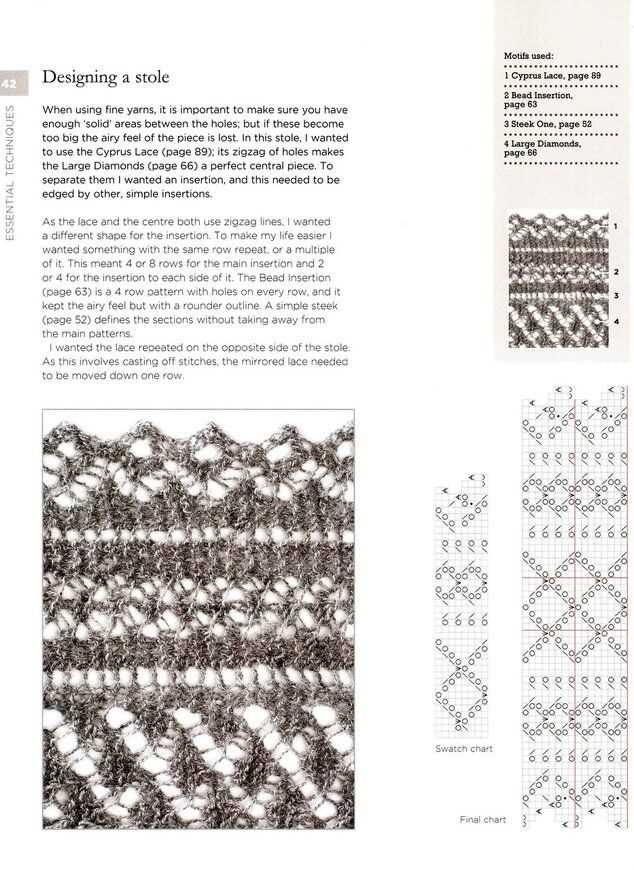
Before you start knitting a lace pattern, it’s important to understand the terminology used in lace knitting. This includes knowing the meaning of abbreviations such as k2tog (knit two stitches together), yo (yarn over), and ssk (slip, slip, knit). Having a good grasp of these terms will make it easier to follow the instructions in the pattern.
2. Read the pattern through before starting
Before you pick up your needles, take the time to read the entire lace pattern from start to finish. This will give you a sense of the overall structure of the pattern and help you better understand how the different sections fit together. It can also help you identify any potential challenges or confusing parts of the pattern that you might need to pay extra attention to.
3. Use stitch markers
Lace patterns often have repeats of the same set of stitches. Using stitch markers to mark these repeats can be incredibly helpful in keeping track of where you are in the pattern. You can place a stitch marker at the beginning and end of each repeat, making it easier to count stitches and identify any mistakes.
4. Take advantage of charts
Many lace patterns are presented in the form of charts rather than written instructions. Learning how to read charts can make it much easier to understand the pattern and visualize the lace pattern. Take the time to familiarize yourself with the different symbols used on the chart and practice interpreting them before you start knitting.
5. Practice with simpler patterns first
If you’re new to lace knitting, it can be helpful to start with simpler lace patterns before tackling more complex designs. This will give you a chance to practice the basic techniques and get comfortable with reading lace patterns. As you gain more experience, you can gradually move on to more intricate lace patterns.
By following these tips, you’ll be well-equipped to read and understand knitting lace patterns. With practice and patience, you’ll soon be creating beautiful lace projects that you can be proud of.
Materials needed for the lace pattern
When starting a lace knitting project, it is important to gather all the necessary materials beforehand. Here is a list of the basic materials you will need to successfully complete the lace pattern:
- Yarn: Choose a yarn that is suitable for lace knitting, preferably a lightweight and fine yarn. Opt for natural fibers like cotton, silk, or wool, as they tend to hold the lace patterns well.
- Knitting Needles: Select a pair of knitting needles in a size that is appropriate for the chosen yarn. Lace patterns often require smaller needle sizes to enhance the stitch definition.
- Stitch Markers: Use stitch markers to highlight specific sections of the lace pattern, making it easier to keep track of the stitches.
- Tapestry Needle: A tapestry needle will be needed to weave in loose ends and finish off the project.
- Scissors: Keep a pair of sharp scissors handy to trim yarn ends and cut through any knots or tangles.
| Yarn | Knitting Needles | Stitch Markers | Tapestry Needle | Scissors |
|---|---|---|---|---|
| Cotton, silk, or wool | Appropriate size for yarn | To highlight sections | To weave in loose ends | To trim yarn ends |
Having these materials at hand will ensure a smooth knitting experience and help you create beautiful lace patterns. Remember to choose high-quality materials that complement your chosen yarn and enhance the overall texture and appearance of the finished project.
Step-by-step instructions for the lace pattern
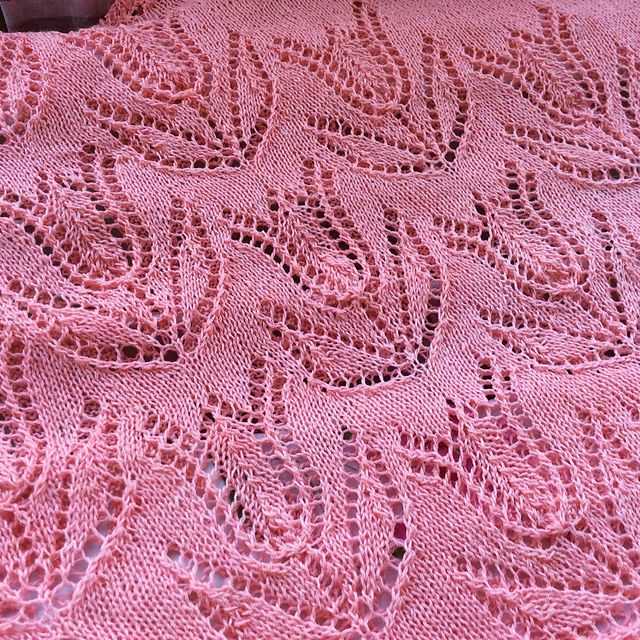
If you are looking for an easy and beautiful lace pattern to knit, look no further! Follow these simple step-by-step instructions and you will be able to create a stunning lace pattern in no time.
Materials
Before you start, gather the following materials:
- Yarn of your choice
- Knitting needles (appropriate size for your yarn)
- Scissors
Instructions
- Cast on a multiple of 6 stitches, plus 2 extra stitches for the selvedge.
- Set-up Row: Knit the first 2 stitches for the selvedge.
- Row 1 (right side): Knit the first 2 stitches, then *yo, k2tog, k2* repeat from * to * until the last 2 stitches, knit the last 2 stitches for the selvedge.
- Row 2 and all even rows: Knit the first 2 stitches for the selvedge, then purl until the last 2 stitches, knit the last 2 stitches for the selvedge.
- Row 3: Knit the first 2 stitches, then *k2, yo, ssk* repeat from * to * until the last 2 stitches, knit the last 2 stitches for the selvedge.
- Row 5: Knit the first 2 stitches, then *k2tog, yo, k2* repeat from * to * until the last 2 stitches, knit the last 2 stitches for the selvedge.
- Repeat Rows 2-5 until desired length.
- After completing the final row, knit the last 2 stitches and bind off all stitches.
- Snip the yarn and weave in any loose ends to finish the lace pattern.
Now that you have the step-by-step instructions, you can start knitting your lace pattern. Whether you’re a beginner or an experienced knitter, this easy pattern will yield beautiful results and add an elegant touch to any project. Happy knitting!
Common mistakes to avoid when knitting the lace pattern
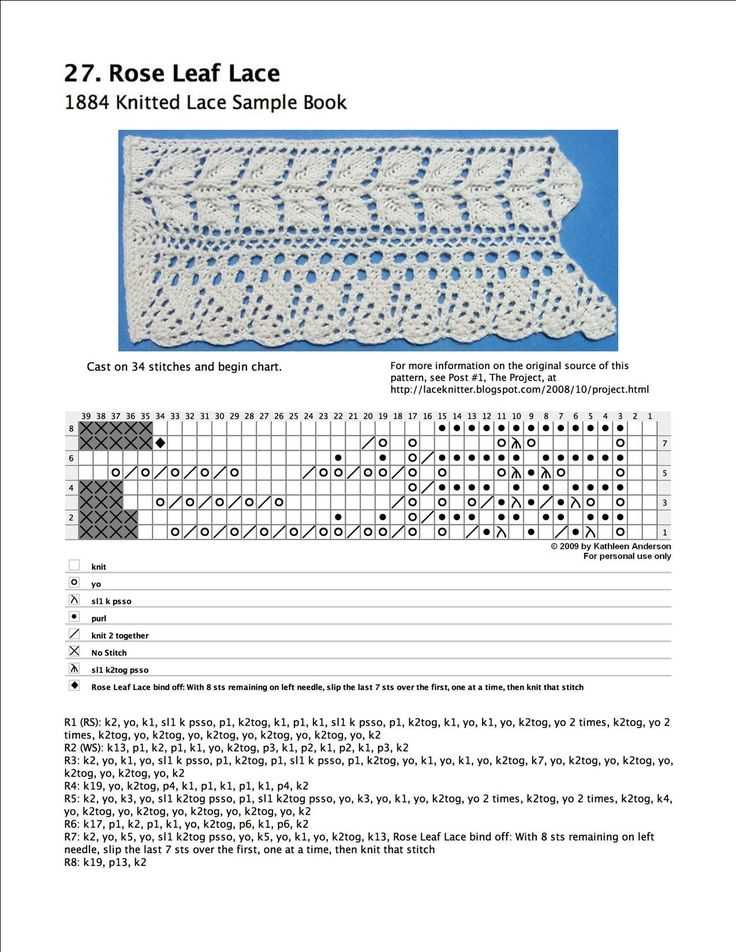
Knitting a lace pattern can be a fun and rewarding project, but it’s important to watch out for common mistakes that can detract from the final result. Here are a few key things to avoid when knitting lace:
1. Tension Issues:
One of the most common mistakes when knitting lace is having inconsistent tension. If your tension varies throughout the pattern, it can affect the overall appearance and alignment of the lace motifs. Make sure to pay attention to your tension and try to keep it consistent throughout.
2. Miscounting Stitches:
When knitting lace, it’s crucial to count your stitches regularly, especially when working on complicated stitch patterns or charts. Miscounting stitches can lead to asymmetrical patterns or missed decreases, resulting in an uneven or distorted lace design. Take your time and double-check your stitch count frequently.
3. Skipping or Adding Yarn Overs:
Yarn overs are an essential part of lace knitting, creating the open spaces and decorative motifs. However, it’s easy to accidentally skip or add extra yarn overs, which can throw off the balance of the lace pattern. Make sure to carefully follow the instructions and markings on the pattern to ensure the correct placement of yarn overs.
4. Not Using Lifelines:
Lifelines are a handy tool in lace knitting that can save you from disaster if you make a mistake. By threading a contrasting yarn through a row of stitches, you can easily rip back to that lifeline if needed, without losing all your progress. Not using lifelines increases the risk of having to start over completely if a mistake occurs.
5. Lack of Blocking:
Blocking is an essential final step in lace knitting that helps shape and define the lace motifs. Skipping this important step can result in a finished project that looks uneven or mushy. Take the time to block your lace project properly, following the instructions for the yarn and pattern to achieve the desired result.
Avoiding these common mistakes when knitting the lace pattern can help you achieve a beautiful and polished finished project. With careful attention to detail and practice, you’ll be able to create intricate and stunning lace designs.
Intermediate knitting lace pattern
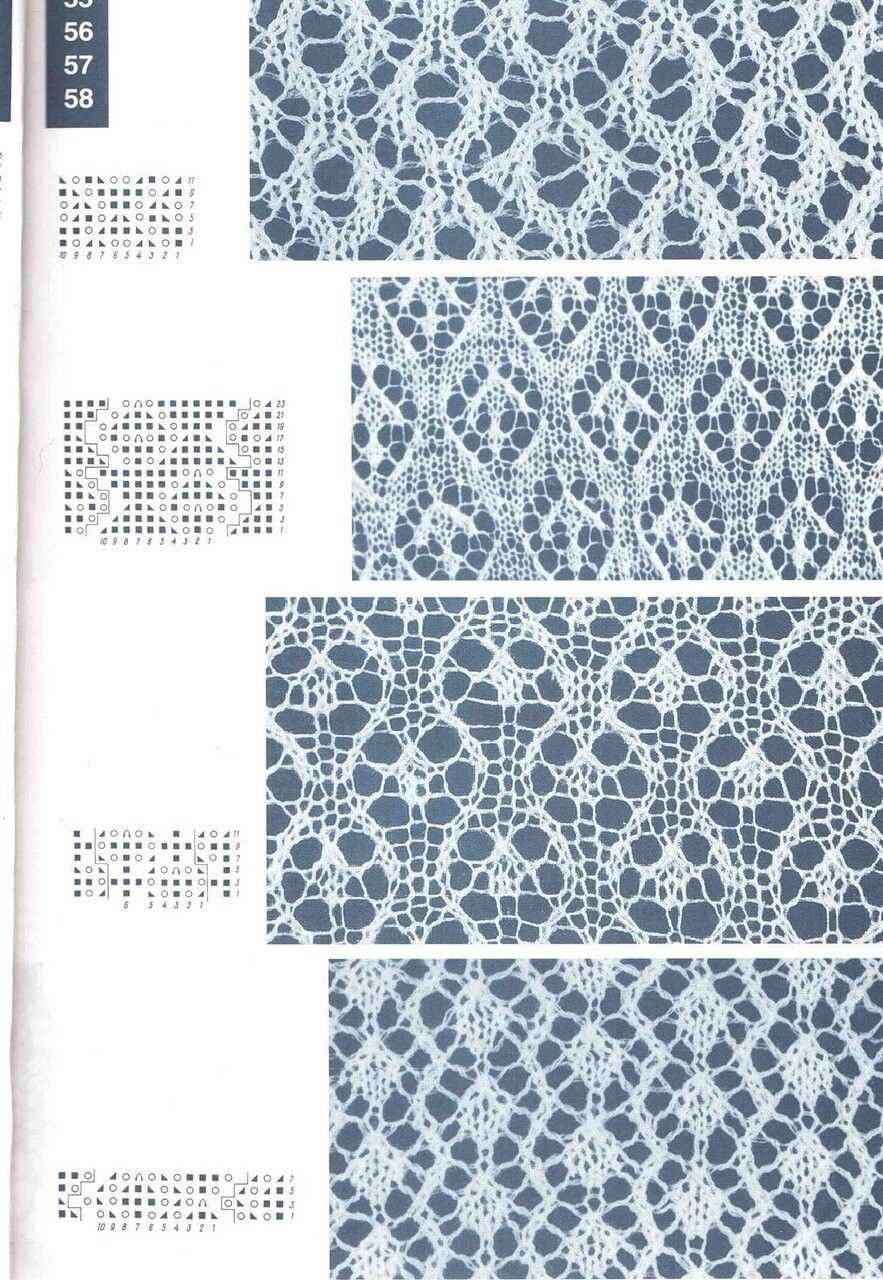
If you are looking to take your knitting skills to the next level, an intermediate knitting lace pattern is a great place to start. Lace knitting involves creating intricate patterns and designs using yarn overs and decreases. It requires some experience with basic knitting techniques and the ability to read charts or written instructions.
One popular intermediate lace pattern is the “Feather and Fan” stitch. This pattern features a repeating pattern of yarn overs, knit stitches, and decreases, which creates a beautiful wave-like effect. It can be used to create stunning shawls, scarves, or even blankets.
To get started with the Feather and Fan stitch, you will need to know how to knit, purl, yarn over, and decrease. The pattern usually starts with a multiple of 18 stitches plus 2 edge stitches. You will work the pattern over a set number of rows, repeating the same sequence of stitches.
Another intermediate lace pattern to try is the “Pineapple” stitch. This pattern features a combination of yarn overs, knit stitches, and decreases to create a lacy design that resembles pineapples. It can be used to create elegant cardigans, tops, or even table runners.
To knit the Pineapple stitch, you will need to be comfortable with basic knitting techniques such as knit, purl, yarn over, and decrease. The pattern usually starts with a multiple of 10 stitches plus 3 edge stitches. You will work the pattern over a set number of rows, following the chart or written instructions.
Materials needed for the lace pattern
When embarking on a lace knitting project, it’s important to gather all the necessary materials to ensure a smooth and enjoyable knitting experience. Here is a list of the materials you will need:
Yarn:
Choose a yarn that is appropriate for lace knitting. Look for a lightweight yarn that has good stitch definition and is soft to the touch. Common options include lace weight or fingering weight yarn made from natural fibers like wool or silk.
Knitting Needles:
Select a pair of knitting needles that are suitable for the yarn you have chosen. Lace knitting often requires smaller needle sizes to create delicate and intricate patterns. Circular needles are recommended for larger lace projects as they can accommodate a larger number of stitches.
Stitch Markers:
Stitch markers are essential for keeping track of pattern repeats and marking important sections of your lace work. These small plastic rings or clips can be easily attached to your knitting needles or stitches to help you stay organized.
Tapestry Needle:
A tapestry needle is necessary for weaving in loose ends and finishing off your lace project. Choose a needle with a large eye to accommodate the yarn thickness and a blunt tip to avoid splitting the delicate lace stitches.
Pattern and Instructions:
Lastly, make sure you have a lace pattern that you would like to knit. You can find a wide variety of lace patterns online or in knitting books and magazines. Make sure to read the instructions carefully and familiarize yourself with any special stitches or techniques before starting your project.
By gathering these materials ahead of time, you will be well-prepared to start your lace knitting project and create beautiful and intricate lace patterns in no time!
Step-by-step instructions for the lace pattern
If you’re looking to add a touch of elegance to your knitting projects, lace patterns are a great option. They create beautiful, delicate designs that are sure to impress. If you’re new to lace knitting, don’t worry! With these step-by-step instructions, you’ll be able to master the lace pattern in no time.
Step 1: Choose your yarn and needles
Start by selecting the yarn and needles that you want to use for your lace project. Lace patterns are best achieved with finer yarns and smaller needles, as they allow for more intricate designs. Look for a lace weight or fingering weight yarn, and choose a pair of needles that are appropriate for that weight.
Step 2: Cast on and knit a few rows
Once you have your yarn and needles ready, cast on the desired number of stitches for your project. Knit a few rows in a basic stitch like garter stitch or stockinette stitch to create a foundation for your lace pattern.
Step 3: Begin the lace pattern
Now it’s time to dive into the lace pattern! Start by knitting the first row according to the lace pattern instructions. This may involve simple yarn overs and decreases, or more complex combinations of stitches. Pay close attention to the pattern, as lace knitting often requires careful counting and attention to detail.
Step 4: Repeat the lace pattern
Once you have completed the first row of the lace pattern, continue repeating the pattern for the desired length of your project. Each row of the pattern will build on the previous rows, creating the intricate lace design. Take your time and work at a steady pace to ensure accuracy.
Step 5: Finish and block your project
Once you have reached the desired length of your project, it’s time to finish off and block your lace piece. Bind off your stitches and weave in any loose ends. To enhance the lace pattern and give it a polished look, block your project by wetting it and pinning it down to shape. Allow it to dry completely before removing the pins.
With these step-by-step instructions, you’ll be on your way to creating beautiful lace patterns in no time. Remember to practice and be patient, as lace knitting can take some time to master. Before you know it, you’ll be creating intricate lace designs that will impress everyone who sees them.
Finishing touches for the lace pattern
After completing the main body of your lace knitting project, it’s time to add the finishing touches to enhance the beauty of the pattern. These final steps can make a significant difference in the final result and ensure that your lace design truly stands out.
First, you may want to block your lace project to achieve a polished and professional look. Blocking involves wetting the lace and then carefully stretching it to the desired dimensions. This helps to open up the lace stitches and create crisp, defined patterns. You can use blocking mats, pins, and a measuring tape to ensure accurate shaping. Remember to follow the specific blocking instructions for your chosen yarn and pattern to avoid any damage or distortion.
Next, it’s time to add any additional embellishments or edging to complement the lace design. You can choose to add beads, sequins, or even embroidery to further enhance the intricacy and visual appeal of your lace work. These small details can add a touch of elegance and personalization to your project. Consider experimenting with different techniques and materials to achieve the desired effect.
An important final step is to carefully weave in any loose ends or yarn tails. This ensures that your lace project remains secure and prevents any potential unraveling. Avoid cutting the yarn too close to the fabric to prevent it from coming undone. Instead, leave a small tail and use a tapestry needle to weave it back into the lace stitches, making sure it is hidden and secure.
With these finishing touches, your lace knitting project will be complete and ready to be enjoyed or gifted. Your attention to detail and the extra effort put into these final steps will undoubtedly make your lace pattern truly shine.
Advanced Knitting Lace Pattern
Looking to challenge yourself with a more intricate lace pattern? Try this advanced knitting lace pattern to take your knitting skills to the next level!
This pattern combines intricate stitches and complex lacework to create a stunning finished project. It requires knowledge of basic lace knitting techniques and the ability to read a lace chart.
Materials Needed
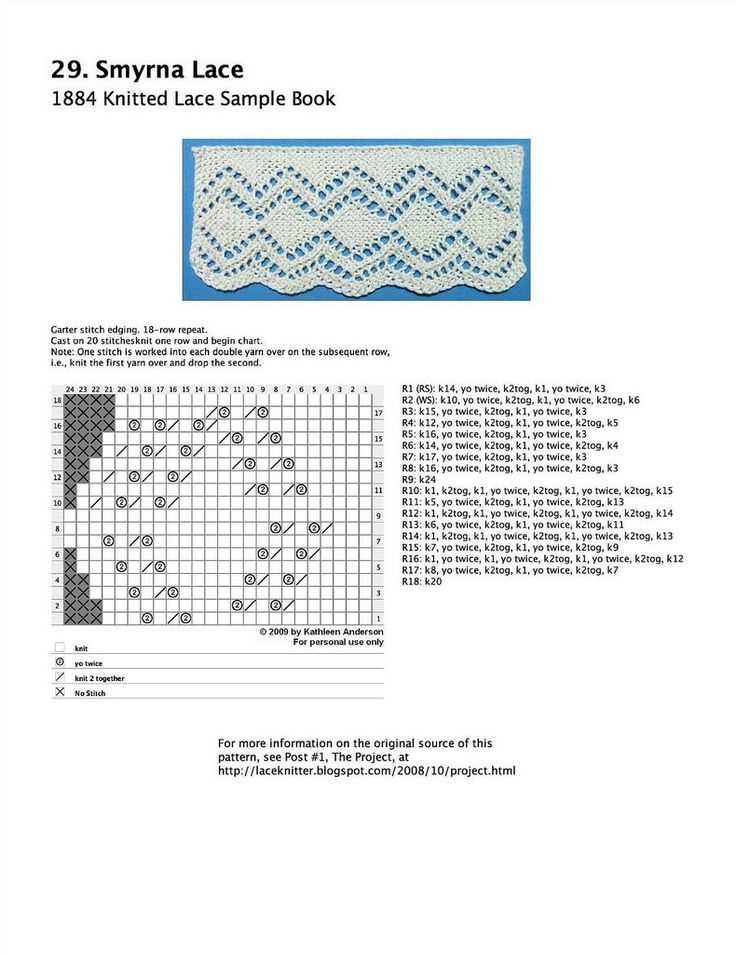
- Yarn: Choose a fingering weight or lace weight yarn in the color of your choice.
- Knitting Needles: Use a size appropriate for your chosen yarn.
- Stitch Markers: Optional, but can be helpful for keeping track of pattern repeats.
Instructions
- Cast on a multiple of stitches required by the lace chart.
- Follow the lace chart, knitting and purling as indicated.
- Repeat the chart as necessary to reach the desired length.
- Bind off when your project is the desired length.
Tips
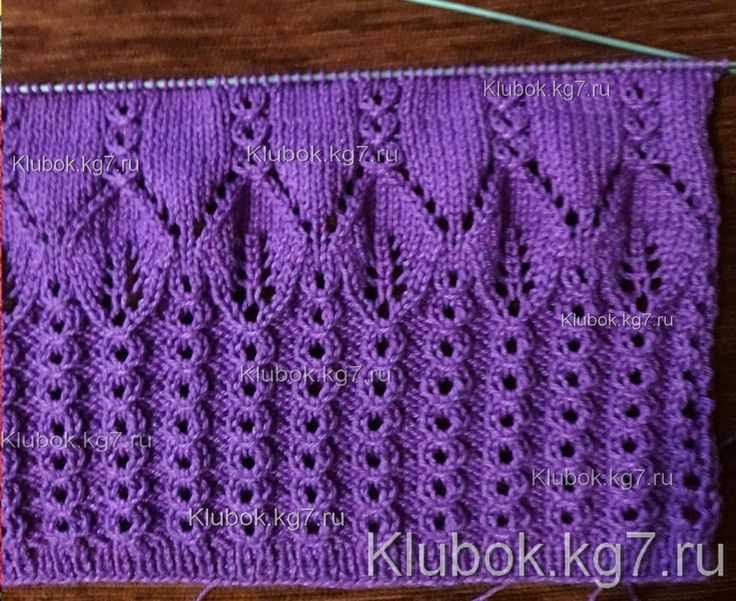
- Use a lifeline: To avoid losing your progress, thread a contrasting yarn through the stitches of a row before beginning the next row. This way, if you make a mistake, you can easily rip back to the lifeline.
- Tension is key: Lace patterns can be more challenging to get even tension. Pay attention to your tension and adjust your knitting style if necessary.
- Practice patience: Advanced lace patterns can be time-consuming and require focus. Take your time and enjoy the intricate stitchwork.
With this advanced knitting lace pattern, you can create beautiful, intricate designs that are sure to impress. Remember to take your time and have patience, as these patterns require extra attention to detail. Happy knitting!
Q&A:
What is an easy knitting lace pattern?
An easy knitting lace pattern is a type of knitting pattern that creates a delicate and ornamental lace design using a combination of yarn overs, decreases, and other knitting techniques.
Are there any specific stitches or techniques used in easy knitting lace patterns?
Yes, easy knitting lace patterns often use common lace stitches such as yarn overs (YO), knit two together (K2tog), slip slip knit (SSK), and others. These stitches are used to create the openwork and decorative elements of the lace pattern.
Can beginners knit lace patterns?
Yes, beginners can definitely knit lace patterns. There are many easy knitting lace patterns available that use simple stitches and repetition, making them suitable for beginners. Starting with a smaller project such as a lace scarf or dishcloth can be a good way to practice lace knitting.
What are some examples of easy knitting lace patterns?
Some examples of easy knitting lace patterns include the feather and fan stitch, the diamond lace stitch, the eyelet lace stitch, and the garter lace stitch. These patterns often have a repetitive nature, making them easy to remember and work on.
Where can I find easy knitting lace patterns?
Easy knitting lace patterns can be found in knitting books, online knitting websites, and knitting blogs. There are also many video tutorials available that demonstrate how to knit lace patterns step by step. Pinterest and Ravelry are great platforms to browse and find easy knitting lace patterns as well.